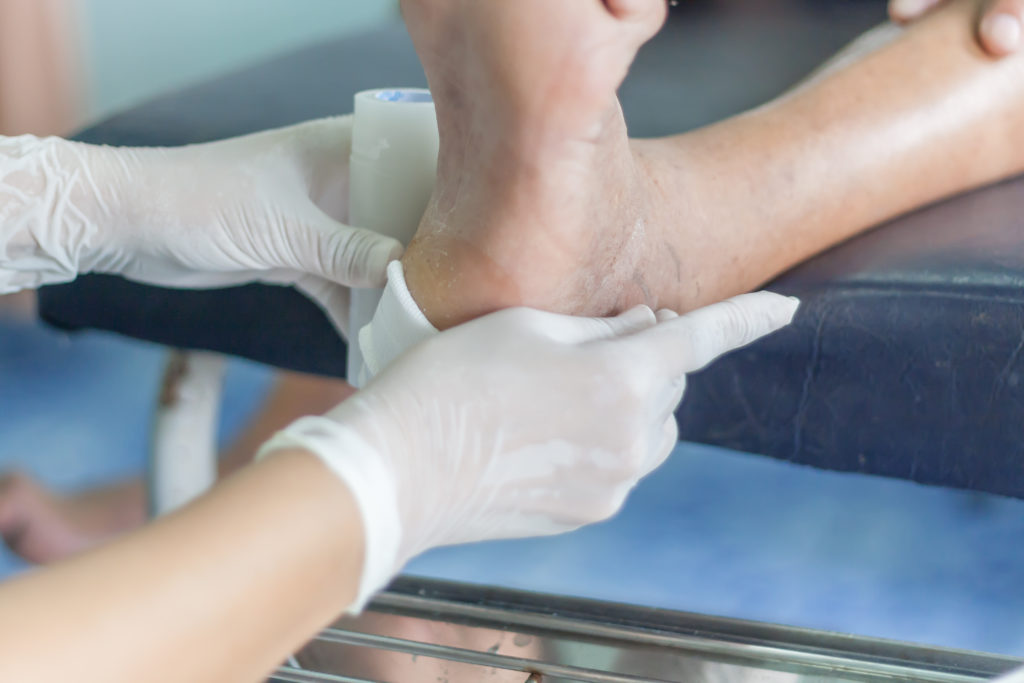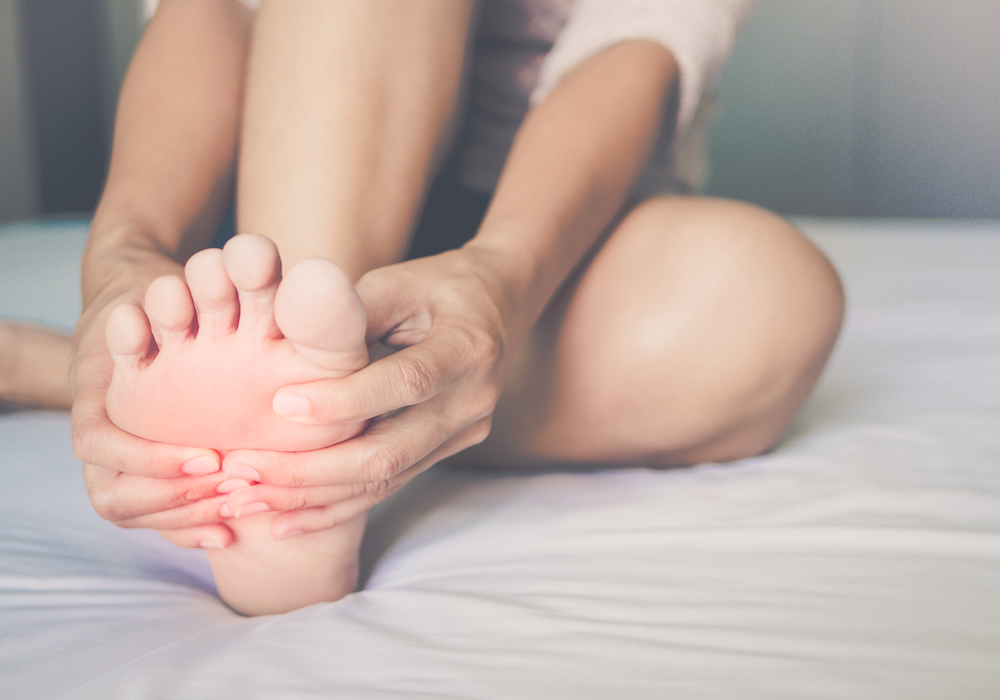THIS POST IS PART OF THE ULTIMATE GUIDE TO FOOT AND ANKLE INJURIES
Diabetes, a condition of elevated blood sugar, affects around 6 percent of the United States. Diabetic foot problems, such as Charcot foot, are a common cause of hospitalization for those with diabetes. Charcot foot in diabetes is a serious problem that can potentially cause lower extremity limb loss.
Due to nerve damage, people with diabetes are at risk of Charcot arthropathy. Charcot arthropathy is a condition that results in the breakdown of joints and bones in the foot. The foot becomes swollen and red and may appear to be severely infected. If not treated properly, this can lead to a deformity of the foot which can lead to disability, difficulty with shoe wear or loss of a limb.
What causes diabetic foot?
- Nerve damage: Because diabetes can cause nerve damage, some people with diabetes will lose sensation in their feet. Due to this, a diabetic person may be unable to feel when something has punctured or irritated their skin. Something as small as a blister can progress to a serious infection.
- Damaged blood vessels: Diabetes can decrease blood flow to the feet due to damaged blood vessels. This poor blood circulation can make it difficult to heal even minor wounds.
- Continuing to walk on damaged foot: Because of loss of sensation, a diabetic may continue to walk on the injured foot. This results in more severe fractures, dislocations and increased deformity. This is what occurs in a Charcot arthropathy.
Symptoms of Charcot foot and ankle
- Foot swelling without obvious injury
- Foot redness
Physician examination
To determine whether you have Charcot arthropathy, your physician will ask you for a complete medical history, have you describe your symptoms and when you started noticing problems and conduct a physical examination. An X-ray, MRI or bone scan may be necessary to pinpoint the problem and determine if there are any other infections.
MAKE AN APPOINTMENT WITH AN FOOT AND ANKLE SPECIALIST AT ORTHOINDY
Treatment for diabetic foot
To ensure the best treatment outcome, the patient should always seek treatment early and follow a doctor’s treatment plan. The sooner Charcot is diagnosed and treated, the more positive the outcome.
A diabetic person should inspect both feet every day for any sign of infection and properly control their blood sugar levels. If they notice an increase in swelling or redness, they should seek medical care immediately.
Treatment for Charcot focuses on healing broken bones and preventing further deformity. In the early stages of Charcot treatment is nonsurgical and includes:
- Casting: To protect the foot and ankle and reduce swelling in the foot. A series of special casts are applied to protect the foot. These need to be changed frequently to monitor improvement. It is possible that weight bearing may be limited during this time.
- Bracing/special shoes: Once the initial swelling is resolved, the patient may be changed to another protective device to protect the foot while the Charcot arthropathy resolves. It can take a year for a total resolution of the process. Once the Charcot arthropathy has resolved, special shoes called extra-depth shoes may be ordered to provide ongoing support and protection for the foot.
Surgery for Charcot foot
If the foot deformity puts the patient at risk for continued problems, such as continuous breaking in the skin, surgery may be necessary. Surgery depends on the location of the problem and the complexity of the deformity.
Surgery may involve trimming bones that are prominent or possible realignment and fusing bones that are out of alignment. If Charcot is ignored for a long period of time, significant deformities can occur that place the foot at risk of amputation.

Schedule an appointment
Your well-being is important to us. Click the button below or call us to schedule an appointment with one of our orthopedic specialists. If your injury or condition is recent, you can walk right into one of our OrthoIndy Urgent Care locations for immediate care. For rehabilitation and physical therapy, no referral is needed to see one of our physical therapists.





